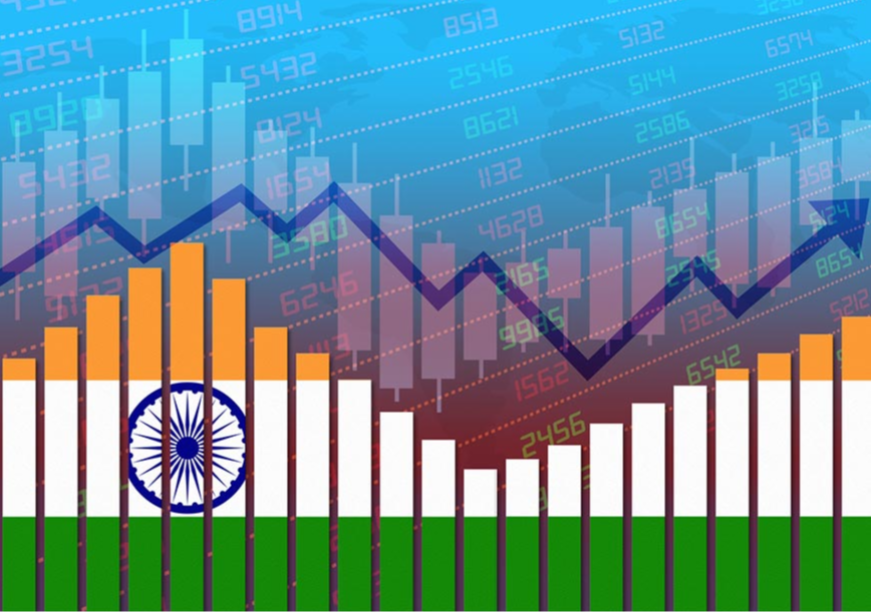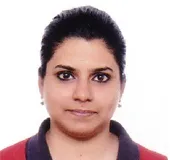-
CENTRES
Progammes & Centres
Location

India’s economic diplomacy has now taken a new turn. For years, it relied on development partnerships through the route of Official Development Assistance (ODA). Although the West views India as an emerging donor, New Delhi has been extending cooperation to its neighbourhood and beyond, way before it achieved independence. India’s stance towards ODA has been ‘demand-driven’ in nature where it prioritised sharing its developmental experience with other fellow economies from the Global South. Gradually, India’s development interventions have been shaped to gain goodwill and create a sweet diplomatic spot amongst other developing countries. While over the last two decades, economic diplomacy has been equated with development partnerships, the Indian model of economic diplomacy is now seriously considering Free Trade Agreements (FTAs) and the creation of transport and eventually economic corridors as important drivers of its economic diplomacy. This position is antithetical to the dominant narrative that was prevalent after India withdrew from the Regional Comprehensive Economic Partnership (RCEP) in 2020, which propagated India as a conservative insulated economy that adheres to protectionism for its domestic industry.
While over the last two decades, economic diplomacy has been equated with development partnerships, the Indian model of economic diplomacy is now seriously considering Free Trade Agreements (FTAs) and the creation of transport and eventually economic corridors as important drivers of its economic diplomacy.
Interestingly, after exit from the RCEP negotiations, India signed a few trade agreements, which include India-Mauritius Comprehensive Economic Cooperation and Partnership Agreement (CECPA) in 2021, India-UAE Comprehensive Economic Partnership Agreement (CEPA), and the India-Australia Economic Cooperation and Trade Agreement (CECTA), the latter two being in 2022. The signing of the Trade and Economic Partnership Agreement (TEPA) between India and the Governments of the European Free Trade Association (EFTA) States in 2024 is the latest addition to this list. In between, India’s participation in the India-Middle East-European Economic Corridor (IMEEC) on the sidelines of the G20 New Delhi Summit reinforces the Indian intention of redefining its economic diplomacy in a departure from its previous avatar of development partnerships. Such trade agreements and the creation of economic corridors help in eliminating tariffs on trade on goods in case of an FTA, deepen regional integration and connectivity, increase flows of foreign investments in goods and services, and reduce the transaction costs of doing business among the participating nations of an economic corridor.
Despite having credible advantages of reducing trade barriers, easing tariffs and putting in place stronger intellectual property protection, inking these agreements is never an easy task. For instance, the India-EU Broad-based Trade and Investment (BTIA) has been in a stalemate for the past decade with over 15 rounds of negotiations. The same is the case with the India-UK FTA talks which entered its 14th round of negotiations but without any likely breakthrough. So, why do trade negotiations take so long? In multilateral trade agreements, economists opine that more is not merrier- i.e., as the negotiations involve more countries, the harder it is to reach an agreement. Though it may appear to hammer out bilateral agreements at a faster pace comparatively, they are still subject to long-term delays and accompanying political motivations.
The India-EU Broad-based Trade and Investment (BTIA) has been in a stalemate for the past decade with over 15 rounds of negotiations.
Further even, FTAs and RTAs are two-level games. It does not merely entail negotiations at the international level but also needs to take into consideration the domestic stakeholders because of the impacts that such trade pacts can exert on them. During RCEP negotiations, there were significant sections in India who were against India moving into the trade pact. However, the perceptible impact of trade agreements and economic corridors on India’s geopolitical relations also needs to be noted. This is especially recognizable in the context of India’s relations with the Gulf countries.
The Indian position is therefore interestingly poised between the theoretical constructs and practical considerations when it comes to playing this interesting game of economic diplomacy that swings between development partnerships through ODAs and comprehensive economic cooperation through FTAs and economic corridors. From an economic perspective, the two instruments (ODAs and FTAs) have completely different utilities. Geopolitically, however, they both help in enhancing the quality of relationships between the participating nations. With an FTA or the creation of a free trade area or an economic corridor, the transaction costs of participating in an otherwise less accessible market are substantially lowered thereby creating an enabling environment for a better return on investments (RoI) for the private sector. The emerging story of the IMEEC is a prime example in this context. On one hand, it showcases India's skilful navigation through international economic waters, while on the other hand, it also showcases its strategic moves on the global stage, leveraging trade as a powerful tool in the intricate dance of geopolitics. Despite facing criticism for stepping away from the Regional Comprehensive Economic Partnership (RCEP), India has been on a roll, forging pivotal trade deals with powerhouses like the UAE and the European Free Trade Association (EFTA) since 2021 as stated earlier. These moves aren't just about trade; they're about positioning India within the global value chain (GVC) more effectively. Currently, India's participation in the GVC lags behind the worldwide average. Yet, the winds of change brought by the global pandemic and the Ukraine crisis have stirred the waters, creating a flux in commodity value chains. This turmoil opens doors for countries, including India, to dive into these shifting currents, seize new opportunities, and claim a larger slice of the international market pie. Investment opportunities under any type of trade agreement unlock avenues for increased Foreign Direct Investment (FDI).
With an FTA or the creation of a free trade area or an economic corridor, the transaction costs of participating in an otherwise less accessible market are substantially lowered thereby creating an enabling environment for a better return on investments (RoI) for the private sector.
On the other hand, ODAs, when based on grants, can hardly entail any economic rate of return (though there are high social and geopolitical rates of return) while the government can earn such RoI for loans and Lines of Credit. ODAs entail governmental interventions rather than private-sector interventions. Of course, the private sector’s role in providing developmental grants is classified largely as philanthropy than anything else. The mounting sustainability challenges of the vulnerable regions of the global south have development providers to think of official development assistance (ODA) and grants play an important role here for the beneficiaries, as often a business case for SDGs is not perceptible.
Again, studies suggest a causal relationship between FDI and ODA which, if tapped, can help in maximising gains and minimising costs for the beneficiaries. Apart from easing the transfer of technological and business know-how to developing economies, FDI enables linking the country’s economy to global value chains and facilitating economic upgrading. Yet, not all types of ODA can infuse the promotion of investment, growth and economic progress. OECD countries (Japan, the UK, Germany, France, and the US) highlight how a development provider’s loan(s) given as ODA has been instrumental in promoting their respective FDI in the recipient country. Further, it also revealed that these specific loans offered for particular projects, such as economic infrastructure, telecommunications, energy and finance had a positive impact towards attracting FDI in the recipient country. However, it is a given that these positive benefits of FDI do not flow without a conducive policy, legal and institutional environment.
Apart from easing the transfer of technological and business know-how to developing economies, FDI enables linking the country’s economy to global value chains and facilitating economic upgrading.
India, as such, is not a big player in the global domain of development financing through ODAs when compared with the United States, United Kingdom, and China. However, its “demand-driven” model is unique and stands as a replicable model for south-south cooperation. On the other hand, the framework on which India’s economic diplomacy through FTAs and economic corridors stand is based on the economy’s inherent strength rendered by an extensive human capital (with a population of around 1.42 billion whose more than 55 percent is less than 30 years of age) and an increasing purchasing power as exhibited by a high rate of economic growth of above 6.5 percent. This helps create an extensive factor market and a buoyant product market thereby making India a sought-after participant or partner in this FTA scheme. This has also yielded diplomatic dividends with nations that would otherwise not have been in such warm geopolitical relations earlier. No doubt this diversification of the Indian economic diplomacy portfolio has lent more depth and breadth to India’s vision of the world and its geopolitical and geoeconomic standing.
Nilanjan Ghosh is a Director at the Observer Research Foundation
Swati Prabhu is an Associate Fellow at the Observer Research Foundation
The views expressed above belong to the author(s). ORF research and analyses now available on Telegram! Click here to access our curated content — blogs, longforms and interviews.

Dr Nilanjan Ghosh is Vice President – Development Studies at the Observer Research Foundation (ORF) in India, and is also in charge of the Foundation’s ...
Read More +
Dr Swati Prabhu is Associate Fellow with the Centre for New Economic Diplomacy at the Observer Research Foundation. Her research explores the interlinkages between development ...
Read More +